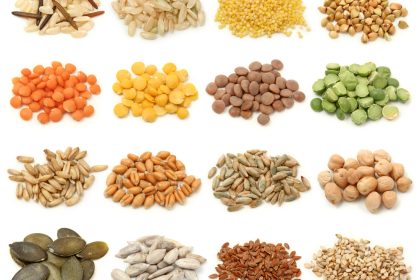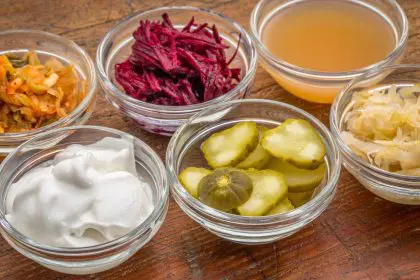Heart disease remains the leading cause of death worldwide, yet emerging nutritional research offers hope through specific foods that actively clean arterial walls and improve cardiovascular function. These natural options work through multiple biological mechanisms to dissolve existing plaque deposits, reduce inflammation, and strengthen the vascular system. Unlike medications that often treat symptoms while causing side effects, these foods address the root causes of arterial blockage. This comprehensive guide examines five evidence-backed foods that can transform heart health by targeting arterial plaque at the cellular level.
Fatty fish rebuilds arterial walls
Cold-water fatty fish like salmon, mackerel, sardines, and trout contain exceptional concentrations of omega-3 fatty acids EPA and DHA that directly influence arterial health through multiple pathways. These marine-derived compounds integrate into cell membranes throughout the cardiovascular system, changing how cells respond to inflammatory triggers.
The omega-3s in fatty fish reduce the production of adhesion molecules that allow inflammatory cells to attach to arterial walls—the first step in plaque formation. By decreasing these molecular “hooks,” fewer white blood cells can initiate the inflammatory cascade that leads to plaque buildup.
These fatty acids also enhance the function of endothelial cells that line blood vessel interiors. Healthy endothelial cells produce nitric oxide, a molecule that signals arteries to relax and expand, increasing blood flow. This expansion creates lower pressure inside vessels, reducing the mechanical stress that contributes to arterial damage and subsequent plaque formation.
Regular consumption alters the composition of existing arterial plaques, making them more stable and less likely to rupture. These ruptures cause most heart attacks when pieces break free and block downstream vessels. The structural changes within plaque after consistent fish consumption significantly reduce this rupture risk.
For optimal arterial protection, consuming fatty fish twice weekly provides sufficient omega-3 levels to initiate these protective mechanisms. The effects begin at the molecular level within hours of consumption but require consistent intake over several months to create significant changes in arterial health.
Walnuts neutralize oxidative damage
Uniquely among nuts, walnuts contain the plant-based omega-3 fatty acid alpha-linolenic acid (ALA) alongside an impressive array of antioxidant compounds that work synergistically to protect arterial walls from oxidative damage. This combination tackles multiple aspects of arterial plaque formation simultaneously.
The ALA in walnuts serves as a building block for specialized inflammation-resolving molecules that actively calm arterial inflammation. This resolution process helps prevent the chronic inflammatory state that characterizes arterial disease and allows healing processes to predominate instead.
Polyphenolic compounds in walnut skins, particularly ellagitannins, directly neutralize the oxidized LDL cholesterol particles that initiate plaque formation. These compounds prevent the chemical modification of LDL cholesterol that transforms it from a necessary transportation molecule into a damaging substance that triggers arterial inflammation.
The L-arginine content provides raw material for nitric oxide production, enhancing arterial flexibility and reducing blood pressure. This improved elasticity creates less turbulent blood flow, decreasing the physical forces that damage arterial walls at branch points where plaque typically accumulates.
Daily consumption of a small handful (about 1.5 ounces) of walnuts provides clinically significant arterial protection. Studies tracking arterial function show measurable improvements in endothelial performance within 4 hours of walnut consumption, with cumulative benefits developing over weeks of regular intake.
Berries dissolve existing plaque
The vivid colors of berries—particularly blueberries, strawberries, blackberries, and raspberries—signal their rich content of anthocyanins and other polyphenols that actively combat arterial plaque through several concurrent mechanisms. These compounds reach impressive concentrations in the blARoodstream after consumption.
The anthocyanin compounds penetrate existing plaque deposits and neutralize free radicals trapped within them. This deactivation of oxidizing agents allows natural cleanup processes to remove damaged cells and oxidized lipids that form the core of arterial plaques.
Berries significantly increase the body’s production of adiponectin, a protein hormone that enhances insulin sensitivity while simultaneously reducing arterial inflammation. This dual action helps prevent the metabolic dysfunction that often accompanies and accelerates cardiovascular disease.
The high potassium content in berries counteracts the arterial-tightening effects of dietary sodium, helping maintain proper electrolyte balance that supports healthy blood pressure. This mineral helps regulate fluid dynamics within blood vessels, preventing the water retention that increases blood volume and pressure.
The fiber in berries—particularly the soluble pectin variety—binds to cholesterol compounds in the digestive tract, preventing their absorption and facilitating their elimination. This reduction in circulating cholesterol means less raw material available for plaque formation throughout the arterial system.
Daily consumption of one cup of mixed berries provides the threshold dose of these protective compounds needed for arterial health benefits. The effects accumulate over time, with studies showing measurable reductions in arterial stiffness after 8 weeks of consistent intake.
Olive oil transforms cholesterol transport
Extra virgin olive oil serves as the cornerstone of the Mediterranean diet’s cardiovascular benefits due to its unique composition of monounsaturated fats and polyphenolic compounds. These components work together to fundamentally alter how cholesterol moves through the body.
The primary monounsaturated fat in olive oil—oleic acid—changes the structure of LDL particles, making them larger and less prone to oxidation. These larger, more stable LDL particles are less likely to penetrate arterial walls and contribute to plaque formation compared to the small, dense LDL particles associated with carbohydrate-heavy diets.
Olive oil’s polyphenols, particularly oleocanthal, provide natural anti-inflammatory action comparable to ibuprofen but without the side effects. This compound inhibits the same cyclooxygenase enzymes targeted by non-steroidal anti-inflammatory drugs, reducing arterial inflammation that precedes plaque development.
The hydroxytyrosol compound found exclusively in olive oil activates cellular detoxification pathways that help arterial cells resist damage from oxidative stress. This protective effect enables the body’s natural repair mechanisms to function more effectively along arterial walls.
Olive oil consumption increases HDL cholesterol—the “protective” form that removes excess cholesterol from tissues including arterial walls. More importantly, it improves HDL functionality, enhancing its ability to extract cholesterol from developing plaques and transport it to the liver for elimination.
For arterial protection, consuming 2-3 tablespoons of extra virgin olive oil daily provides the threshold dose needed for these benefits. The highest quality oils contain the most potent concentrations of the protective compounds, making selection important for therapeutic effects.
Leafy greens enhance arterial flexibility
Dark leafy vegetables—including spinach, kale, Swiss chard, arugula, and collard greens—deliver an exceptional concentration of nitrates that convert directly to nitric oxide in the body. This molecule serves as the primary signaling compound that tells arteries to relax and expand, immediately increasing blood flow.
These greens contain substantial folate, which lowers homocysteine—an amino acid that directly damages arterial walls when elevated. By helping convert homocysteine back to methionine, folate removes this corrosive compound from circulation before it can harm blood vessels.
The vitamin K in leafy greens activates matrix Gla protein, which prevents calcium from depositing in arterial walls. This anti-calcification effect helps maintain arterial flexibility and prevents the hardening that characterizes advanced cardiovascular disease.
The carotenoid compounds—particularly lutein and zeaxanthin—accumulate in arterial tissues where they provide potent antioxidant protection against the free radical damage that initiates the inflammatory cascade leading to plaque formation.
Leafy greens contain unique nitric oxide precursors that remain active for up to 8 hours after consumption, creating an extended period of improved blood flow following each serving. This prolonged effect explains why regular consumption yields such significant cardiovascular benefits over time.
For optimal arterial protection, consuming 2-3 cups of leafy greens daily provides the necessary compounds to support arterial health. The effects on blood flow begin within 45 minutes of consumption, with structural benefits to arterial walls developing over months of consistent intake.
These five foods demonstrate remarkable abilities to clean arteries and prevent heart attacks through complementary mechanisms. While each offers significant benefits independently, their effects multiply when consumed together as part of a comprehensive heart-healthy eating pattern. The artery-clearing benefits begin at the molecular level with the very first serving but accumulate over time to create meaningful reductions in cardiovascular risk.
The protection extends beyond simply preventing heart attacks—these foods actively reverse existing arterial damage through natural biological processes. This restoration of arterial function improves blood flow throughout the body, enhancing oxygen delivery to all tissues and supporting overall health beyond the cardiovascular system alone.
For those concerned about heart health, incorporating these five foods into daily eating patterns provides a food-as-medicine approach supported by extensive research. Unlike pharmaceuticals that often come with unwanted side effects, these natural options deliver multiple health benefits beyond their arterial-clearing properties, making them ideal foundations for long-term wellness.












